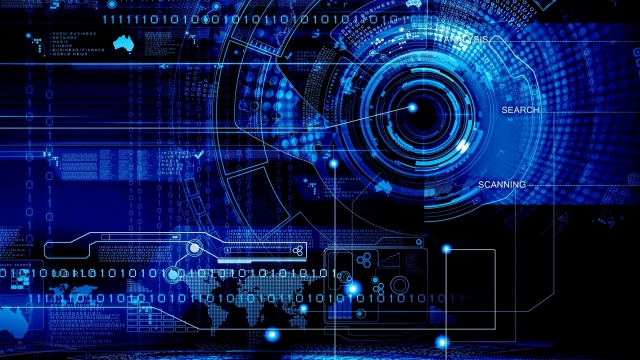
In an era where technology continues to push the boundaries of what was once deemed impossible, a new phenomenon has emerged, captivating and alarming experts and the public alike. Enter deepfake technology, a sinister yet fascinating development that allows the artificial manipulation of audio and visual content to create convincing and often indistinguishable fake videos. The rise of deepfakes poses a multitude of ethical, social, and political concerns, bringing us face to face with a world where truth and reality can be manufactured and distorted with alarming ease.
Deepfakes utilize advanced artificial intelligence algorithms to manipulate and superimpose faces and voices onto existing video footage, producing seamless and realistically deceptive content. This technology has raised a plethora of questions regarding the authenticity and credibility of visual evidence, blurring the line between what is real and what is fabricated. With the ability to alter historical records, incriminate innocent individuals, or spread misinformation on a massive scale, deepfakes have the potential to disrupt democracies, influence public opinion, and undermine trust in media sources.
While deepfake technology has garnered attention primarily for its potential for malicious use, its applications extend beyond just the realm of deception. This groundbreaking technology offers captivating opportunities in entertainment, allowing for seamless face swaps of actors in movies or resurrecting beloved deceased celebrities for one last on-screen appearance. However, the potential consequences of these digitized manipulations are vast, questioning the very essence of truth and authenticity in an increasingly digital and interconnected world.
As deepfake technology continues to advance at an alarming rate, society is left grappling with how to navigate this newfound reality. The urgent need for robust detection algorithms, legislation regulating the creation and dissemination of deepfakes, and media literacy initiatives cannot be understated. The challenges posed by deepfakes force us to confront the delicate balance between technological innovation and the safeguarding of truth, begging the question: how do we responsibly navigate the uncharted waters of this unnerving and exhilarating digital frontier?
The Origins of Deepfake Technology
The concept of deepfake technology emerged as a result of advancements in artificial intelligence and machine learning. It all started with the development of deep neural networks, which are algorithms inspired by the structure and functions of the human brain. These networks are capable of analyzing and understanding vast amounts of data, enabling them to learn and mimic patterns, behaviors, and even human voices and facial expressions.
The earliest origins of deepfake technology can be traced back to academia, where researchers and scientists began exploring the possibilities of training deep neural networks to generate realistic synthetic images and videos. By feeding these networks with massive datasets, they were able to teach them to recognize and replicate visual patterns, textures, and facial features with astonishing accuracy.
The breakthrough moment for deepfake technology came when a technique known as generative adversarial networks (GANs) was introduced. GANs are a type of deep neural network that consists of two parts: a generator and a discriminator. The generator is tasked with creating fake images or videos, while the discriminator’s role is to identify any discrepancies between the generated content and real images or videos. Through a process of continuous learning and refinement, the generator becomes increasingly proficient at producing highly realistic and believable deepfakes.
With time, the technology behind deepfakes became more accessible, thanks to open-source libraries and tools that enabled even those with limited technical expertise to create convincing deepfake content. As a consequence, deepfakes surged in popularity, receiving widespread attention across various media platforms, both for their potential in entertainment and their potential for misuse and harm.
This marks the end of section 1 on the origins of deepfake technology. Stay tuned for the next sections, where we will dive deeper into the applications and implications of this groundbreaking technology.
The Threats and Implications of Deepfakes
Deepfake technology poses significant threats and implications that have become increasingly concerning. As these AI-generated manipulations become more advanced, they have the potential to deceive and manipulate individuals on a massive scale. The consequences are far-reaching, affecting various aspects of society.
One major concern is the potential for deepfakes to disrupt trust and undermine the credibility of information. With the ability to fabricate convincing audio and video content, malicious actors can create fake news, alter historical records, or spread misinformation. The implications of this are profound, as it becomes increasingly challenging to discern what is real and what is manipulated. Society may find itself in a state of constant doubt and skepticism.
Additionally, deepfakes can have severe implications for privacy and consent. As the technology advances, it becomes easier to generate highly realistic fake videos without the knowledge or consent of the individuals involved. This raises ethical questions about consent in the digital age and heightens concerns around revenge porn, harassment, and cyberbullying. The potential for deepfakes to wreak havoc on personal lives and reputations is a significant cause for concern.
Moreover, deepfakes could have serious implications for national security and political landscapes. With the ability to create convincing videos of public figures saying or doing things they never actually did, the potential for manipulation and misinformation in elections or diplomatic relations is alarming. Deepfakes could be used as a powerful tool in propaganda campaigns, causing significant disruptions and potentially altering the course of political events.
In conclusion, deepfake technology poses wide-ranging threats and implications that should not be underestimated. From undermining trust and credibility to endangering privacy and consent, these artificially generated manipulations have the potential to significantly impact society. The advancements in deepfake technology call for increased awareness, regulation, and measures to combat the potential harms it may cause.
Countermeasures and Solutions
The rise of deepfake technology has undoubtedly raised concerns regarding the potential for misuse and deception. However, as the risks grow, so too does the development of countermeasures and solutions. In this section, we will explore some of the key approaches being taken to combat the negative effects of deepfakes.
-
Advanced Detection Algorithms: One crucial aspect of combating deepfakes is the development of sophisticated detection algorithms. Machine learning techniques and AI are being employed to identify and analyze the subtle nuances that distinguish deepfakes from authentic content. By training these algorithms on large datasets of real and manipulated videos, researchers are continually improving their accuracy in detecting deepfakes.
-
Blockchain Technology: Blockchain, the decentralized and immutable ledger system, is also being explored as a potential solution to address the challenges posed by deepfakes. By leveraging the transparent nature of blockchain, it becomes easier to trace the origin and authenticity of media content. The tamper-proof characteristics of the technology make it difficult to manipulate or forge data, thus offering a way to verify the integrity of digital content.
-
Education and Awareness: Increasing public awareness about the existence and potential dangers of deepfakes plays a crucial role in countering their impact. By educating individuals about the presence of deepfakes and the techniques used to create them, people can become more skeptical and cautious when encountering suspicious media. Educating users about the importance of fact-checking and critical thinking can help limit the spread and influence of deepfakes.
As the arms race between deepfake creators and defenders continues, it is important to keep exploring innovative and multi-faceted solutions. By combining advanced detection algorithms, blockchain technology, and education, we can empower individuals and organizations to navigate the challenges posed by deepfakes effectively.

